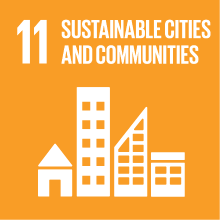MUSEOLOGY
- Academic year
- 2020/2021 Syllabus of previous years
- Official course title
- MUSEOLOGIA
- Course code
- FM0388 (AF:331651 AR:179362)
- Teaching language
- Italian
- Modality
- On campus classes
- ECTS credits
- 6
- Degree level
- Master's Degree Programme (DM270)
- Academic Discipline
- L-ART/04
- Period
- 1st Term
- Moodle
- Go to Moodle page
Contribution of the course to the overall degree programme goals
Particular attention will be devoted to the critical reading of historical sources (textual and iconographic) useful for the reconstruction of the history of museums, as well as to change their relationship with the public.
Expected learning outcomes
- ability to apply knowledge and understanding know how to use the specific vocabulary, in particular to present a personal study on the topics of the course, using appropriate historical and iconographic sources;
-judgment ability: know how to analyse the history of a museum, placing it in the cultural context of the time and in the wider history of museums;
-communication skills: knowing how to use specific terminology, introduced and explained in lessons or in reference texts; knowing how to compare profitably with teachers and colleagues around the topics of the course;
-learning skills: based on reference material, analyse the characteristics of a museum, placing them in the history of museums, with particular reference to the relationship with their audience.
Pre-requirements
Contents
Referral texts
Bjuström Per, Les premiers musées d’art en Europe et leur public, in Les Musées en Europe à la veille de l’ouverture du Louvre, Actes des colloques du Louvre (Paris, Musée du Louvre, 3-5 juin 1993), edité par E. Pommier, Paris, Klincksieck, 1995, pp. 551-563
Cristofani Mauro, Luigi Lanzi antiquario, in Gli Uffizi: quattro secoli di una galleria, atti del Convegno internazionale di studi a cura di P.Barocchi e G.Ragionieri, Olschki, Firenze 1983, vol.II, pp.355-366
Fittipaldi Arturo, Tutela, conservazione e legislazione dei Beni culturali a Napoli nel secolo XVIII, in Musei, tutela e legislazione dei beni culturali a Napoli tra ‘700 e ‘800, Università degli Studi di Napoli “Federico II”, Napoli 1995, pp.7-29
Floridia Anna, Il pubblico della Real Galleria attraverso i registri delle mance, in Forestieri in Galleria. Visitatori, direttori e custodi agli Uffizi dal 1769 al 1785, Centro DI, Firenze 2007, pp.43-81
Franceschini Michele e Vernesi Valerio, Statue di Campidoglio: diario di Alessandro Gregorio Capponi (1733 - 1746), Edimond, Città di Castello 2005, Introduzione, pp.7-23
Gregori Mina, Luigi Lanzi e il riordinamento della Galleria, in Gli Uffizi: quattro secoli di una galleria, atti del Convegno internazionale di studi a cura di P.Barocchi e G.Ragionieri, Olschki, Firenze 1983, vol.II, pp.367-393
Haskell Francis, La nascita delle mostre. I dipinti degli antichi maestri e l’origine delle esposizioni d’arte, trad.it. Skira, Milano 2008, solo pp.15-69 (Introduzione, cap.1 Celebrazione e commercio, cap.2 Tributo e trionfo)
Hénin Emmanuelle, Catalogue, titre, étiquette: la présentation écrite des tableaux dans les expositions de peinture au XVIIIe siècle, in «Studiolo», n. 9, 2012, pp. 100-126.
Il collezionismo d'arte a Venezia. Il Settecento, a cura di L.Borean e S.Mason, Marsilio, Venezia 2009 (un capitolo a scelta)
Meyer Susanne Adina, Il giudizio del pubblico e il ruolo dei critici. Il panorama europeo e il caso romano, in Il Settecento negli studi italiani, a cura di A.M. Rao, Roma, Ed. di Storia e Letteratura, 2010, pp. 323-337
Piva Chiara, Il pubblico dei musei di antichità nell’Europa del Settecento, in “Il Capitale Culturale”, supplemento n.9, pp. 47-81
Rossi Pinelli Orietta, Per una «storia dell'arte parlante»: dal museo Capitolino (1734) al Pio-Clementino (1771-1791) e alcune mutazioni nella storiografia artistica, in “Ricerche di storia dell'arte”, 84, 2004, pp.5-23
Rossi Pinelli Orietta, Intellettuali e pubblico nel XVIII secolo; mutamenti nella destinazione, definizione e descrizione delle opere d’arte, in Studi in onore di Giulio Carlo Argan, La Nuova Italia, Firenze 1994, pp.292
In addition to the general reference texts, non-attending students must complete the exam program with the following texts:
1) K.Pomian, Dalle sacre reliquie all’arte moderna. Venezia-Chicago dal XIII al XX secolo, Il Saggiatore, Milano 2004
2) Eilean Hooper-Greenhill, Musei e formazione del sapere, Il Saggiatore, Milano 2005
Assessment methods
The verification of learning will be based on the individual research that, through the study and presentation of a case study, will serve to demonstrate the acquisition of course content. The research will be presented first in the classroom with a seminar character and will then be delivered in writing and discussed individually during the exam.
The individual written research, to be submitted no later than 15 days before the examination date, must comply with these parameters: text max 20.000 characters (excluding Bibliography and Illustrations). Footnotes and final bibliography according to the rules for the theses. Illustrations at the end of the text, with list of illustrations.
The evaluation will therefore be structured as follows:
Attending students: 30% of the vote on the participation in the lessons + 40% of the vote on the research + 30% on the oral exam on the reference texts
Students not attending: 50% of the vote on the oral exam on the texts of reference + 50% of the vote on the paper.
Type of exam
Teaching methods
The course avails of the university e-learning platform (moodle.unive.it), where will be available teaching materials presented in class, bibliography that can not be found in BAUM and student research.
2030 Agenda for Sustainable Development Goals
This subject deals with topics related to the macro-area "Cities, infrastructure and social capital" and contributes to the achievement of one or more goals of U. N. Agenda for Sustainable Development


